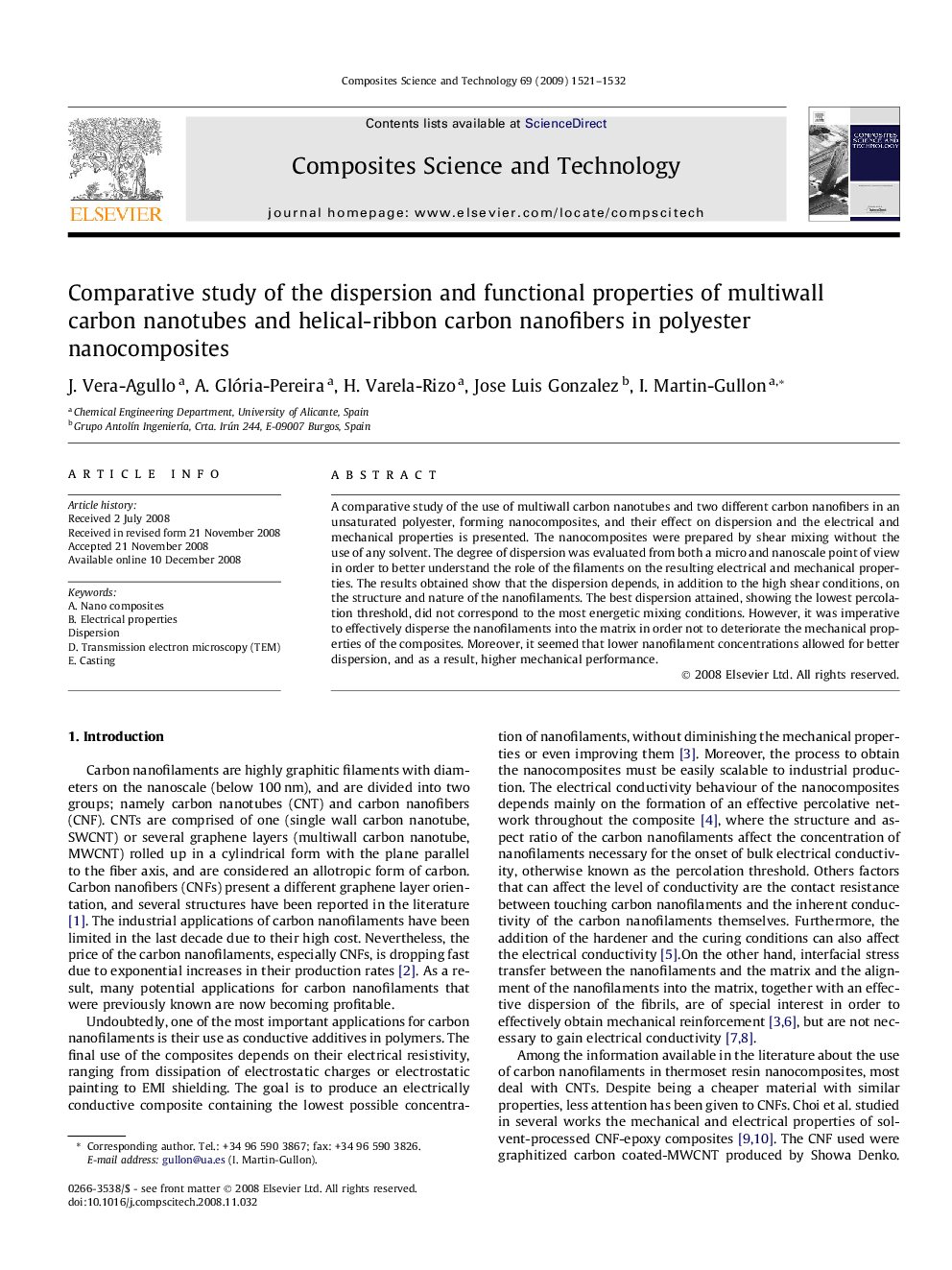| Article ID | Journal | Published Year | Pages | File Type |
|---|---|---|---|---|
| 821613 | Composites Science and Technology | 2009 | 12 Pages |
A comparative study of the use of multiwall carbon nanotubes and two different carbon nanofibers in an unsaturated polyester, forming nanocomposites, and their effect on dispersion and the electrical and mechanical properties is presented. The nanocomposites were prepared by shear mixing without the use of any solvent. The degree of dispersion was evaluated from both a micro and nanoscale point of view in order to better understand the role of the filaments on the resulting electrical and mechanical properties. The results obtained show that the dispersion depends, in addition to the high shear conditions, on the structure and nature of the nanofilaments. The best dispersion attained, showing the lowest percolation threshold, did not correspond to the most energetic mixing conditions. However, it was imperative to effectively disperse the nanofilaments into the matrix in order not to deteriorate the mechanical properties of the composites. Moreover, it seemed that lower nanofilament concentrations allowed for better dispersion, and as a result, higher mechanical performance.
